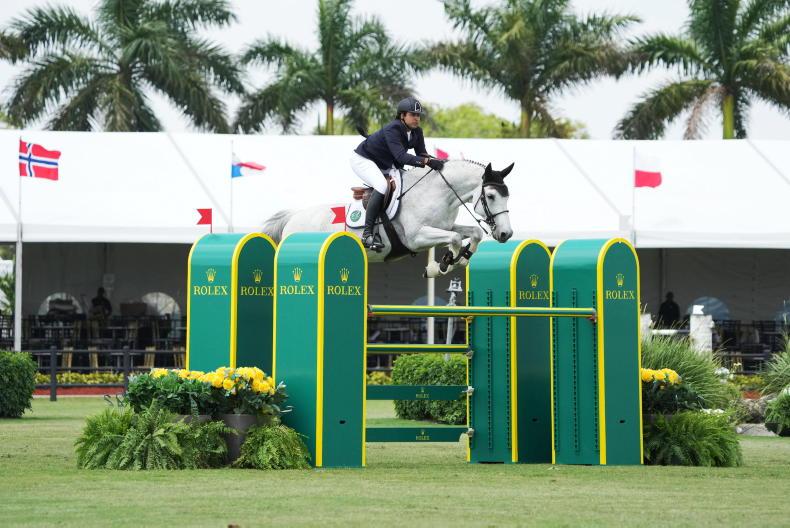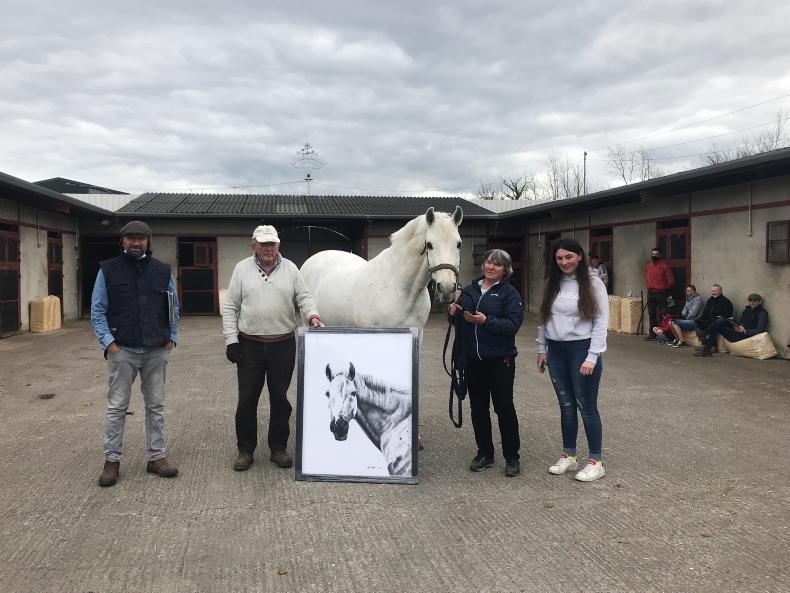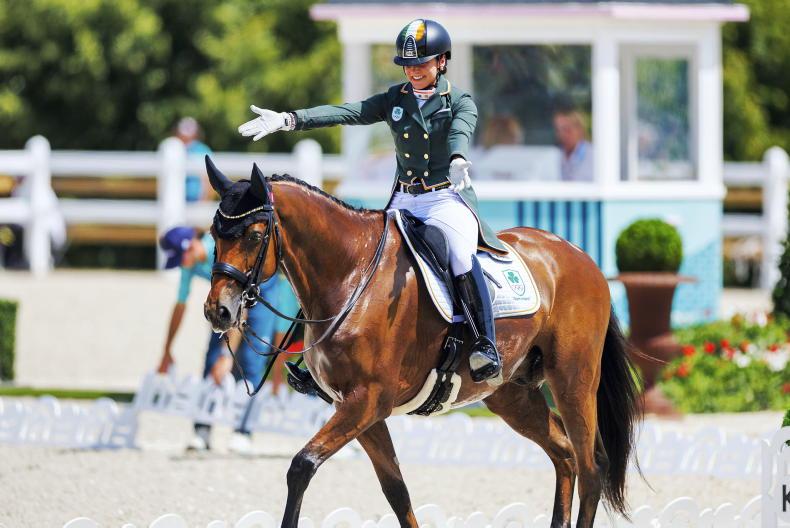DRUMHOWAN Stud’s ongoing support of Dublin’s thoroughbred stallion class paid off when Lucarelli won the Croker Cup on Saturday. The 18-year-old was selected as champion from an entry of six stallions, the minimum number for the class to be held.
Padraig Leacy’s Bosaccio, Thomas Maloney’s Kopperfield, Nickey Murphy’s Mores Wells and Julie Radden’s duo of Galileo’s Secret, owned in partnership with Patrick Whelan and her own 2023 Croker Cup champion Galileo Dance were the other sporting owners and contenders.
Gladys and Eamon McArdle’s Lucarelli, shown by Sam McCormack, is by High Chaparral out of the Acatenango mare Lavorna and was one of three German-bred stallions in the field (Bosaccio and Kopperfield being the others).
“Yes, we have been coming for several years to support the Croker Cup and to try and retain the class at the RDS with various stallions. We thought it was another year’s support, never ever dreaming of winning,” said Gladys afterwards.
“It’s the first time to win the Croker Cup. It’s sinking in, but I always knew this particular stallion had a fantastic step and movement. The fact that the horse had been a successful and winning racehorse and to still have that step, which he also showed in Germany when ridden at the stallion approvals there.”
The Croker Cup class was judged by Jacques Verkerk and Norbert Freistedt. Both have many years of experience with the KWPN and Deutsches Sport Pferde (DSP), so it was interesting to hear about the role of the thoroughbred on the continent.
Correct
“We picked him because he is so loose in his body, such a great walk, very correct in the trot and so relaxed. He’s refined but still, that’s what you need from a thoroughbred,” remarked Verkerk.
The use of thoroughbred stallions in the Irish Sport Horse herd has dropped to less than 10%. “Not even that any more,” replied Verkerk, when asked about the Dutch market.
“We started there like 50 years ago, when you refined the old-fashioned horses. In those days, the thoroughbred was more to refine and modernise the horse. Nowadays, the modern sport horse is often about 25% to almost 40% thoroughbred, because it builds up in many generations and the breeders now specialise towards dressage, towards jumping.”
German and Dutch bloodlines dominated the Paris Olympic eventing blood-lines. Do continental breeders aim to breed for the eventing market?
“There might be a few, but not that much, it’s more that they are focussed on breeding jumpers. A horse may turn out to be an eventer, but that’s later on in sport,” said Verkerk.
“Nearly the same in Germany,” agreed Freistedt. “Most breeders are breeding jumpers or dressage horses, but we [DSP] have a special programme for breeding eventers.
“We have some popular mares like fischerRocana, Michael Jung’s mare. She had a third foal this year. Or the [Tokyo] Olympic champion from Julia Krajewski: Amande de b’Neville, she’ll have her first foal next year.”
The DSP foal shows and auctions at Marbach, the state stud where Stan the Man stood, also have sections for potential event horses. “That works well,” added Freistedt.
It was straight back to business for Lucarelli. “He goes home now to cover a beautiful Connemara mare, who came into the stud three days ago. She’ll be the first mare to be covered by the new Croker Cup champion!”




 This is a subscriber-only article
This is a subscriber-only article
 It looks like you're browsing in private mode
It looks like you're browsing in private mode










SHARING OPTIONS: